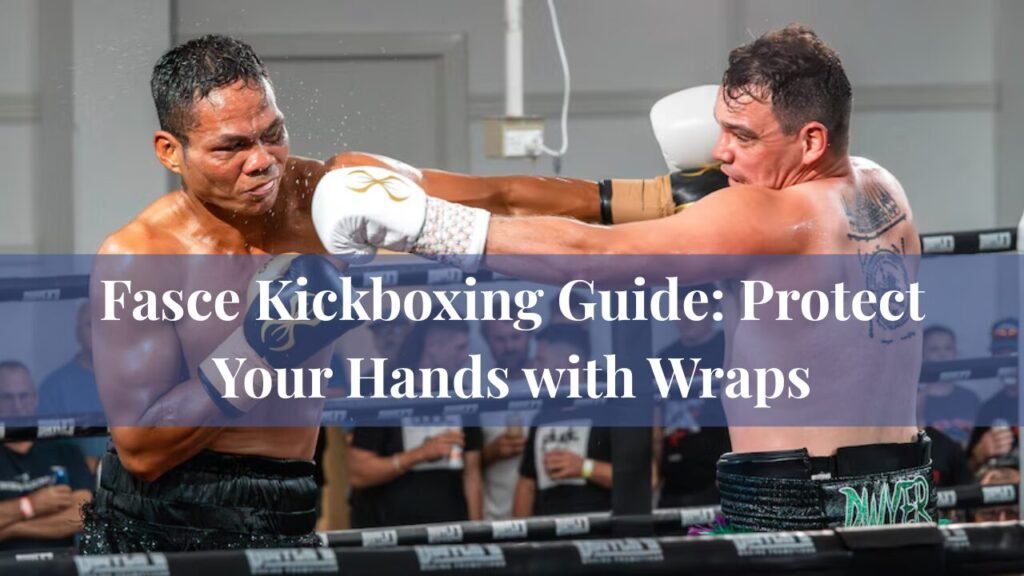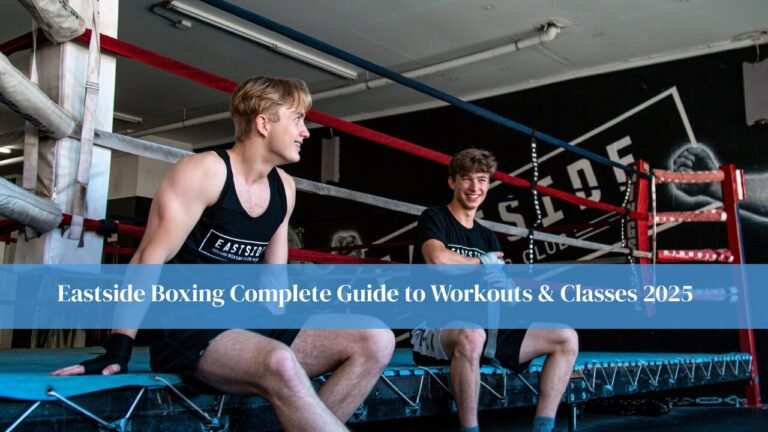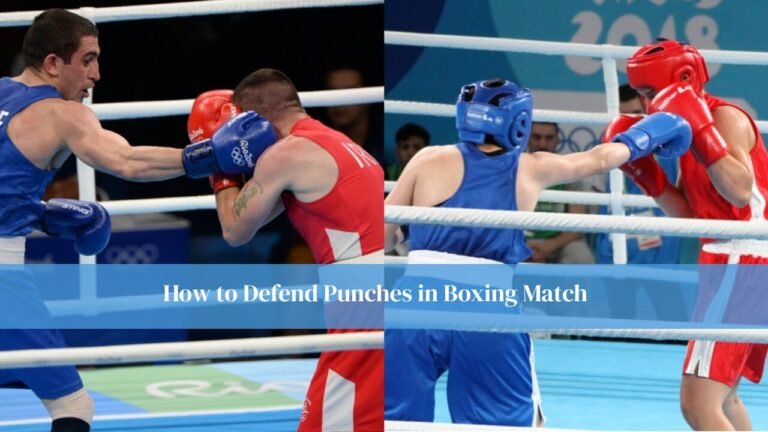In kickboxing and other combat sports, protecting your hands is just as important as perfecting your striking technique. Every punch you throw sends shockwaves through your knuckles, wrists, and hand bones, and without proper protection, the risk of injury rises significantly. This is where fasce kick boxing, the Italian term for hand wraps, come into play. These essential accessories do far more than just add a layer between your skin and gloves they safeguard your knuckles, stabilize your wrists, protect delicate hand bones, and boost your performance by giving you confidence and comfort with every strike.
Whether you are a complete beginner taking your first steps into the world of martial arts or a seasoned professional preparing for a title bout, investing in high-quality fasce is non-negotiable. In this comprehensive guide, you’ll learn exactly what fasce kick boxing are, why they matter, how to choose the right ones, and how to use them effectively. The insights here draw not only from sports science but also from real-world advice from experienced fighters and reputable brands such as Boxing Essential, Combat Arena, Karate Senpai, and Muay Thai Ring.
What Are Fasce Kick Boxing?
Fasce, which means “wraps” in Italian, are long bands of slightly elastic or cotton fabric designed specifically to support your wrists, cushion your knuckles, and protect the intricate network of bones and tendons in your hands during striking. They are worn underneath boxing or kickboxing gloves and have been a staple for decades in both amateur and professional combat sports training.
Typically, hand wraps range from 120 to 180 inches in length. The longer wraps provide more coverage and allow for extra layers of protection, making them the preferred choice for most fighters who engage in heavy bag work or sparring. Their slightly elastic structure (in the case of Mexican-style wraps) or firm cotton composition ensures they can be wrapped tightly for support while remaining comfortable for extended use.
The primary purpose of fasce is to reinforce the structure of your hand, manage sweat, and reduce injury risks during intense training sessions. Over time, they also help maintain proper fist alignment, preventing bad habits that can lead to injuries.
Why You Need Hand Wraps in Kickboxing
The forces generated in kickboxing are no joke — even a well-executed jab can create enough impact to sprain an unprotected wrist or bruise unwrapped knuckles. Fasce are not an optional accessory; they are a foundational part of your training gear.
One of the biggest benefits is wrist stabilization. When you punch, especially at full force, there’s always a risk that your wrist may bend or twist in the wrong direction. A good wrap locks the wrist into proper alignment, reducing the likelihood of hyperextension, sprains, or even fractures.
They also offer knuckle cushioning, shielding one of the most impact-prone areas of your body from abrasions, cuts, and bruises. Anyone who’s spent a session hammering away at a heavy bag without wraps will know just how raw and painful bare knuckles can become.
Additionally, fasce give bone and tendon support. Each human hand contains over two dozen small bones and a network of tendons that are vulnerable to repetitive strain injuries. Wrapping your hands adds a form of “armor” around these structures, allowing them to absorb less shock from your punches.
Another overlooked benefit is sweat management. Hand wraps act as the first line of defense against moisture build-up inside your gloves, absorbing sweat and reducing bacterial growth. This not only keeps your gloves in better condition for longer but also prevents odors and skin issues.
Different Types of Fasce Kick Boxing
Not all hand wraps are built the same, and choosing the right type can make a big difference in your training experience.
Traditional cotton wraps remain a favorite for beginners and experienced fighters alike. Their durability, breathability, and ease of maintenance make them ideal for regular training and sparring. Elastic or Mexican-style wraps, on the other hand, provide a snug, custom fit thanks to their stretchable fabric. They offer enhanced flexibility while maintaining strong wrist support, making them the go-to choice for many seasoned athletes.
For fighters who want convenience, gel inner gloves are a quick option. They slip on like regular gloves and include gel padding for knuckle protection. However, while they’re useful for light bag work or fitness boxing, they do not provide the same level of wrist support as traditional wraps.
Muay Thai wraps are another variation, often shorter to allow for greater mobility in the hands, especially useful for clinching and elbow-heavy training styles. Athletes who want a blend of style and performance often choose themed wraps such as Thai flag designs from Muay Thai Ring, which combine personality with high functionality.
How to Choose the Right Fasce Kick Boxing
Selecting the right wraps involves more than just picking the first pair you see. Length is a key factor — many fighters prefer 180-inch wraps for full wrist and knuckle coverage, while shorter wraps may suffice for those with smaller hands or lighter training needs.
Material is equally important. Cotton wraps are durable and breathable, making them ideal for long sessions, while elastic blends deliver a more secure fit. Closure type also plays a role in convenience; Velcro closures are preferred for their quick application and secure hold during high-intensity workouts.
Some wraps feature additional knuckle padding for extra protection. For those seeking proven reliability, brands like Twins, Venum, Everlast, and Karate Senpai have strong reputations among both amateur and professional athletes.
Real-World Fighter Insight: Why Pros Swear by Fasce
Professional fighters never skip wrapping their hands, regardless of the training session’s intensity. The habit isn’t just about injury prevention it’s also about mental readiness. Wrapping your hands becomes a ritual, signaling to your body and mind that it’s time to focus.
Well-wrapped hands maintain a consistent fist shape, prevent glove slippage, and eliminate hesitation when throwing full-power punches. Fighters like those sponsored by Karate Senpai, which holds an impressive 4.9-star rating from over 1,200 verified customers, often credit their wraps as being just as essential as their gloves or mouthguards.
How to Wrap Your Hands Step-by-Step
Perfect wrapping technique is crucial. Starting with the thumb loop, the wrap should first secure the wrist, then layer over the knuckles, and then weave between the fingers to lock everything in place before finishing back at the wrist. This method distributes tension evenly and ensures the wrap stays secure throughout your training. Skipping steps or wrapping inconsistently can lead to uneven pressure, which increases injury risks.
Common Mistakes to Avoid with Hand Wraps
Many injuries stem from incorrect wrapping. Wrapping too tightly can cut off circulation, leading to numbness or tingling in the fingers, while wrapping too loosely offers minimal support. Neglecting the loops between fingers can cause misalignment in your punches, while failing to wash wraps regularly leads to unpleasant odors and bacteria build-up.
FAQs
Can I use the same hand wraps for boxing and kickboxing?
Yes. Wraps serve the same purpose in both sports just ensure the length and fit meet your specific needs.
Are gel wraps better than traditional wraps?
Gel wraps are convenient and padded but don’t offer the same wrist support. Use them for light or short sessions only.
How do I know if my wraps are too tight?
If your fingers turn pale, feel numb, or pulse oddly, the wraps are likely too tight. Loosen and re-wrap.
How often should I replace my hand wraps?
Replace every 4–6 months or when elasticity wears out. Signs of fraying, thinning, or odor indicate it’s time for new ones.
Can beginners skip wraps during training?
Absolutely not. Beginners are more vulnerable to injuries from poor technique wraps are your first line of defense.
Conclusion
In the world of kickboxing, fasce kick boxing are not just accessories they are a critical piece of protective gear that enhances safety, performance, and confidence. From the durability of traditional cotton wraps to the convenience of gel-based alternatives, there’s an option for every budget, style, and training intensity.
Whether you are training casually, aiming for competition, or working to perfect your striking technique, never compromise on hand protection. Your wraps safeguard the very tools you rely on in the ring your hands. Invest in quality wraps from trusted suppliers like Boxing Essential and Muay Thai Ring, and you’ll not only train safer but also perform better for years to come.




